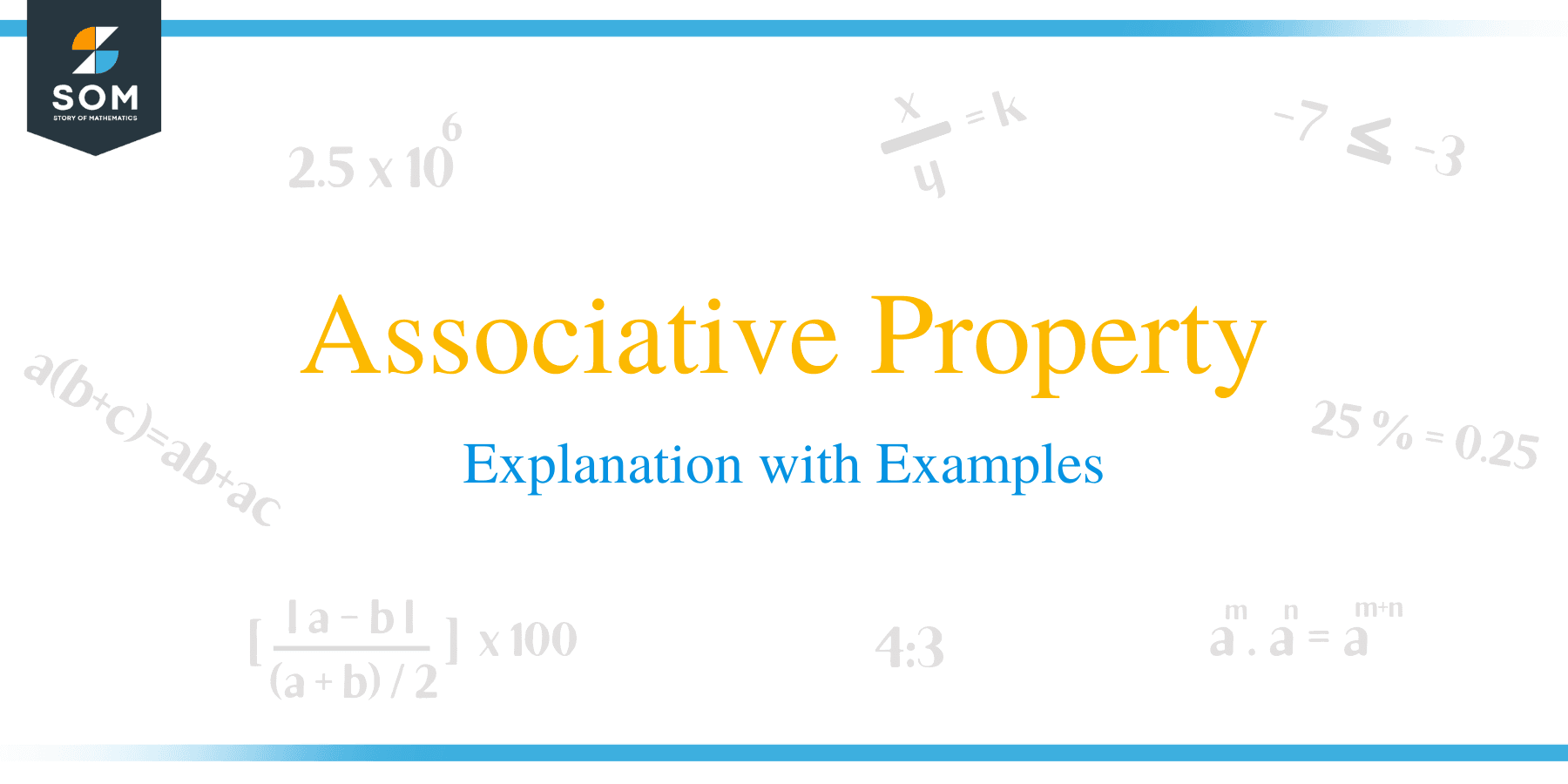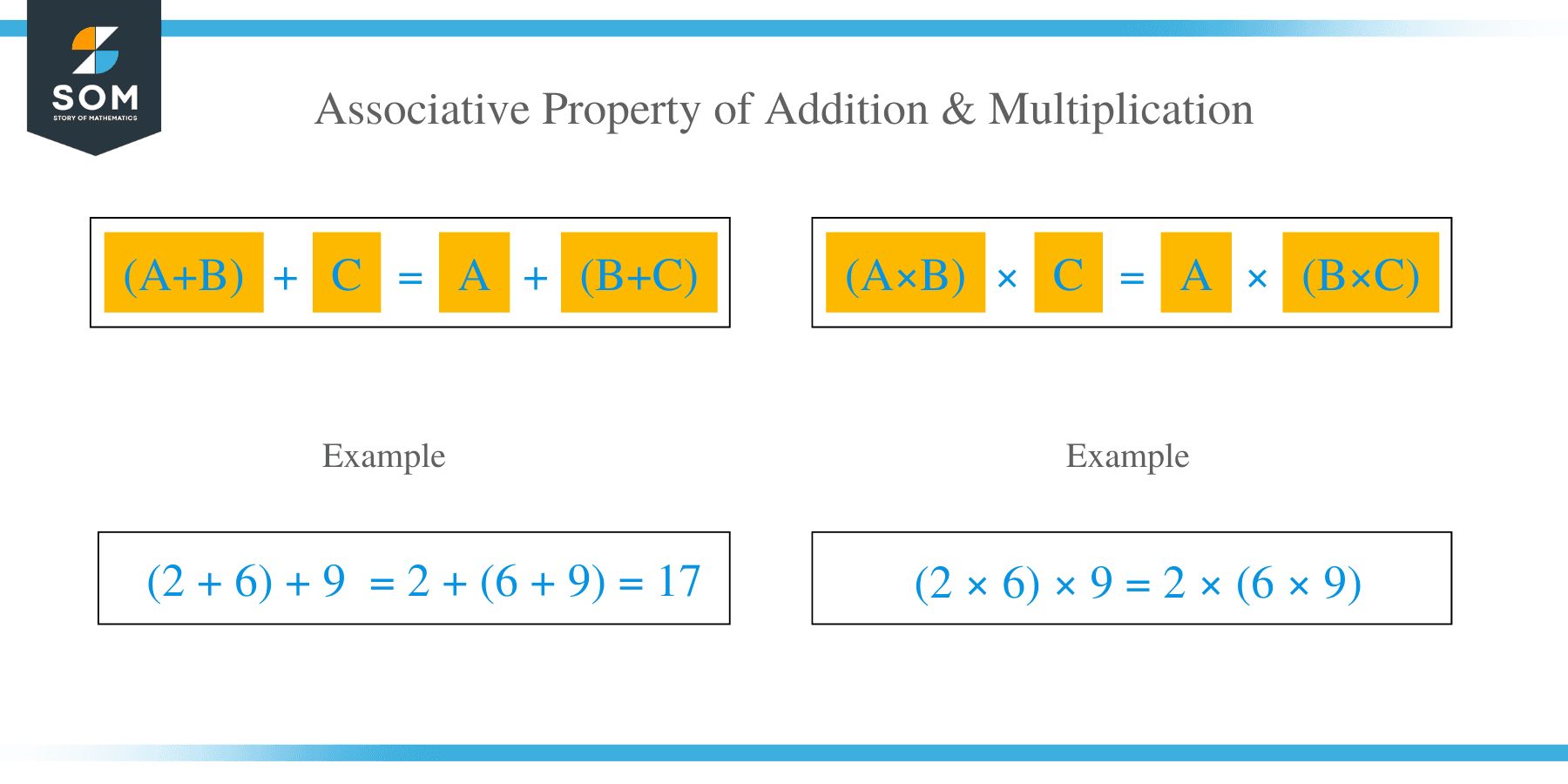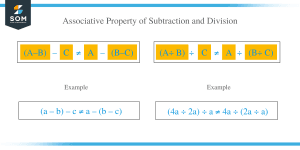- Home
- >
- Associative Property – Explanation with Examples
JUMP TO TOPIC
Associative Property – Explanation with Examples
 The word “associative” is taken from the word “associate,” which means group. Therefore, the associative property is related to grouping. The discovery of associative law is controversial. It was introduced by not just one person.
The word “associative” is taken from the word “associate,” which means group. Therefore, the associative property is related to grouping. The discovery of associative law is controversial. It was introduced by not just one person.
In the early 18th century, mathematicians started analyzing abstract kinds of things rather than numbers, and they wanted to talk about the properties of numbers that explain these objects. In 1919, Hamilton used the phrase “associative character of the operation.”
What is Associative Property?
According to the associative property in mathematics, if you add or multiply numbers, it does not matter where you put the brackets. You can add them wherever you like. This means the grouping of numbers is not important during addition.
Only addition and multiplication are associative, while subtraction and division are non-associative.
Associative Property of Addition
According to the associative property of addition, if three or more numbers are added, the result is the same irrespective of how the numbers are placed or grouped.
Suppose that, if the numbers a, b, and c were added, and the result is equal to some number m, then if we add a and b first, and then c, or add b and c first, and then a, the result is still equal to m, i.e.
(a + b) + c = a + (b + c) = m
The numbers a, b, and c are called addends.
This property also works for more than three numbers.
Example 1
Show that the following numbers obey the associative property of addition:
2, 6, and 9
Solution
2 + 6 + 9
= (2 + 6) + 9 = 8 + 9 = 17
Or
= 2 + (6 + 9) = 2 + 15 = 17
The result is same in both cases. Hence,
(2 + 6) + 9 = 2 + (6 + 9)
As a real-life example of associative property, if I go to the cafe and spend $8 on pizza, $5 on ice cream, and $3 on coffee, then the money I owe to the cashier can be written in the sum form as:
($8 + $5) + $3
Or
$8 + ($5 + $3)
Both sum to $16.
Associative Property of Multiplication
According to the associative property of multiplication, if three or more numbers are multiplied, the result is same irrespective of how the numbers are placed or grouped.
Suppose that, if the numbers a, b, and c are multiplied, and the result is equal to some number n, then if we multiply a and b first, and then c, or multiply b and c first, and then a, the result is still equal to n, i.e.
(a × b) × c = a × (b × c) = n
This property also works for more than three numbers.
Compositions of functions and matrix multiplication are not associative.
Example 2
Show that the following numbers obey the associative property of multiplication:
2, 6, and 9
Solution
2 × 6 × 9 = (2 × 6) × 9 = 12 × 9 = 108
2 × 6 × 9 = 2 × (6 × 9) = 2 × 54 = 108
The result is same in both cases. Hence,
(2 × 6) × 9 = 2 × (6 × 9)
Why Subtraction and Division are Non-associative?
 To understand why subtraction and division do not follow the associative rule, follow the examples below.
To understand why subtraction and division do not follow the associative rule, follow the examples below.
Example 3
State whether the following expression is true.
(a – b) – c = a – (b – c)
- Step 1: What you need to show?
(a – b) – c = a – (b – c)
- Step 2: Take left-hand side and try to prove it equal to right-hand side.
(a – b) – c
- Step 3: Open the parentheses.
a – b – c
- Step 4: Combine b and c in parentheses.
a – (b + c)
- Step 5: See if you get the desired result.
(a – b) – c = a – (b + c)
- Step 6: State your findings.
Since,
(a – b) – c = a – (b + c)
Hence,
(a – b) – c ≠ a – (b – c)
Therefore, the given expression is false and does not follow the associative property.
Example 4
State whether the following expression is true.
(4a ÷ 2a) ÷ a = 4a ÷ (2a ÷ a)
- Step 1: What you need to show?
(4a ÷ 2a) ÷ a = 4a ÷ (2a ÷ a)
- Step 2: Take the left-hand side.
(4a ÷ 2a) ÷ a
- Step 3: Solve.
(4a ÷ 2a) ÷ a = (2) ÷ a = 2/a
- Step 4: Solve the right-hand side now.
4a ÷ (2a ÷ a) = 4a ÷ (2) = 2a
- Step 5: State your findings.
Since,
(4a ÷ 2a) ÷ a = 2/a
4a ÷ (2a ÷ a) = 2a
Hence,
(4a ÷ 2a) ÷ a ≠ 4a ÷ (2a ÷ a)
Therefore, the given expression is false and does not follow the associative property.
